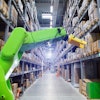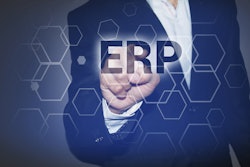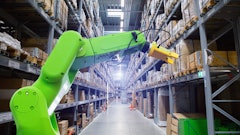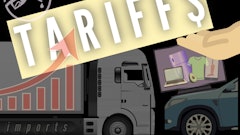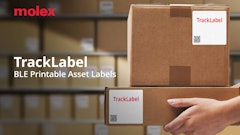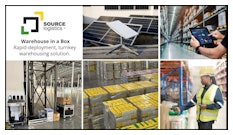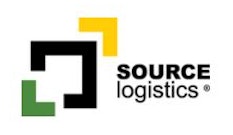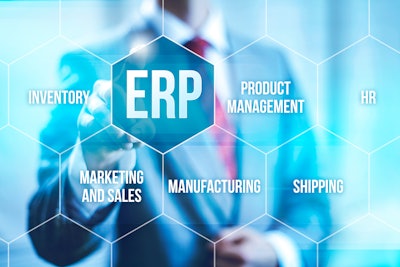
It wasn’t that long ago that the mere mention of the letters E.R.P. would cause many inside the food and beverage industry to cringe and maybe utter a string of four letter words in response. The idea of software suites designed to give insights into inventory, warehouse management and purchasing along with other back-end office functions in order to perform more accurate planning and business forecasting had and still has lots of popularity with f&b executives. It’s just that the execution of the concept hasn’t always lived up to the hype.
But times are changing, and continual advances in technology now mean that ERP solutions have the ability to collaborate both internally and externally in an unprecedented manner. With competition in f&b as fierce and acquisition-friendly as ever, getting real-time advanced supply chain planning and analytics to other departments as well as key trading partners and stakeholders has become more critical than ever. It’s almost like the definition of enterprise resource planning has evolved and changed to keep up with today’s f&b landscape.
“It really has changed in recent years what ERP really means. ERP to us is the whole business solution that helps each f&b company achieve their goal from end-to-end,” says Christian Hutter, executive vice president, products and strategy at Junction Solutions, a single-source provider of enterprise solutions. “It’s not just the technology stack, but the processes, procedures, functions and the assets with which you use to execute those with and the technology behind it that helps enable all of it, that’s what ERP really stands for in modern terms.”
Steady growth pushes need for ERP
After buying the chicken division of a competitor, then acquiring a former Tyson poultry facility soon thereafter, George’s, an Arkansas-based frozen and refrigerated poultry processor, is currently in the middle of trying to implement a new ERP solution. The decision to go with one ERP system was an easy for George’s, but the implementation has been nothing of the sort.
“We’re running pieces of three different systems right now, and we’ve tried to support all three systems because each system keeps that operation running,” says Darrel Keck, vice president of sales and marketing at George’s. “It’s becoming too much of a commitment to keep all three running. As we look to the future and if we continue to grow and expand, we can’t just continue to expand by incorporating another system and another system. It’s something we just have to do. We need an ERP and planning system that we can plug and play.”
After testing a few systems, including their current and ongoing ERP project that Keck termed still in its “exploratory stages” with a vendor on site for the last six months helping to implement, George’s has been blown away with the amount of time the project has taken.
“It’s been very, very slow. And very tedious,” says Keck. “We still have a business to run at the same time, so the time commitment has been huge and all encompassing.”
“You really need to get everyone involved, take the time to fully vet all of the scenarios enterprise-wide,” he says. “Until you get into it, you just don’t understand the amount of time it takes.”
It’s especially important to take a top-to-bottom look at the entire enterprise because even though many companies in the f&b sector are similar, no two businesses or long-term growth strategies are the same.
“Growth through acquisition and organic growth offer two completely different ways on how you want to approach the ERP system and the capabilities of an ERP system,” says Hutter. “Both look at growth, but how it is achieved and the solution set that needs to be in place to facilitate both versions of growth are very different. You have to fundamentally shift how you look at ERP. If you’re looking at ERP only as a tool to make you more efficient, you might end up optimizing bad processes.”
Full Integration and “one source” are key
Will Foods started out in the late 1920s as a simple poultry slaughterhouse, but acquisitions in recent years has turned them into a broadline foodservice distributor with over 4,000 items servicing the Buffalo, Rochester and Syracuse, N.Y., markets as well as southern and northern Pennsylvania. But for Will Foods, the acquisition of a larger poultry business in 2013 also included the inheriting of an existing ERP solution, one that has never really proven to be useful.
“They had the ERP system already in place, but they weren’t using it consistently and they weren’t using a lot of the functionality it was supposed to provide,” says Bob Manley, executive vice president at Will Foods. “So we purchased routing optimization software and tried to integrate it into the ERP. The ERP already had a warehouse management system, but it was weak at best, so we purchased a WMS and integrated it. But both times, the integration was a nightmare.”
The integration of different solutions from different vendors has been so frustrating to Manley and Will Foods that they are about ready to give up the search altogether.
“Our focus is to have a fully-integrated system where everything communicates properly,” says Manley. “We haven’t been able to accomplish this yet. We’ve tested a few different solutions, but none of them have met our needs to be fully integrated.”
With today’s advances in technology, more solutions being moved to cloud-based and web-based technologies and improved modular software designs, f&b companies should be able to mix and match modules from different vendors and add new ones to optimize and improve performance. But often the solutions that offer “one source” of data are the easiest to integrate enterprise-wide. ERP providers like AFS Technologies offer advanced service oriented architecture (SOA) designed to allow quick upgrades of system components without the company-wide disruptions of a traditional ERP upgrade.
“To be fully integrated it is imperative that you have one single database. Many ERP solutions combine multiple solutions together and sell them as an "integrated solution," when actually they are separate software solutions, sometimes authored from different vendors, that have separate databases that have been "integrated" to keep the data in sync. Data integrity always becomes a problem in this type of environment,” says Joe Scioscia, vice president of sales at Vormittag Associates, Inc., an enterprise management software provider based in Ronkonkoma, N.Y. “Having a single database not only insures accurate data, but single database systems perform faster, are more scalable, and are easier to maintain and integrate with other solutions.”
Rewards are worth the wait
One fact that nobody seems to debate are the benefits a true, fully-integrated ERP solution offers to an f&b company that is looking towards expansion, or even just optimizing the bottom line.
“The rewards on the back end are huge though,” says Keck. “The intel you get (from an ERP) is really good stuff and how it relates downstream is hard to put into words. Having a good forecast can make everything so much smoother for production, for purchasing, for the finance department. It really gives you a lot more clarity on what’s driving your business.”
As ERP technology continues to improve, the f&b companies that continue to evolve along with it will no doubt hold a competitive advantage over the ones left behind the curve. If the big picture at your company projects towards continued growth and expansion in more markets, a fully integrated ERP solution is quickly becoming an essential tool of the trade.
Integration Doesn’t Need To Be Painful; It Should Be Logical
Chances are every supplier of technology and performance optimizing solutions for f&b has heard the argument before … “I need this to integrate into my ERP … can you assure me your solution can do that?”
Integrating one vendor’s solution into a different vendor’s ERP isn’t as hard as it has been made out to be. Oftentimes, it’s the ERP system that has its limitations.
“Integrating a solution like Terra Technology’s demand sensing solution with existing ERP systems is straightforward in terms of technical implementation, so there tends to be little fear that systems will not fit together,” says Robert F. Byrne, CEO, at Terra Technology, the Norwalk, Conn.-based provider of demand sensing, inventory optimization and transportation forecasting solutions. “The more common challenge is logical integration.”
Byrne points out that traditional demand planning runs weekly or monthly, while distribution and logistics depends on daily execution. That means the demand plan is out of date six days a week or 83 percent of the time, and it is even worse for systems using monthly planning. This is where a clear disconnect occurs between solutions like demand planning and existing ERP systems.
“The first step of logical integration includes rethinking how inefficient processes caused by ERP limitations should be adjusted to directly use accurate daily forecasts produced by demand sensing,” says Byrne. “Once more efficient processes are in place, the second step is to reassess how the automation inherent in our demand sensing solution can improve productivity.”
As Byrne also points out, some of the best minds from inside the supply chain continue to tout the services of specific solution providers over the larger ones.
“The greatest improvement in inventory and overall value in supply chains continues to come from best-in-breed solutions,” says Lora Cecere, founder of Supply Chain Insights and the author of the enterprise software blog “Supply Chain Shaman” that focuses on how to use enterprise applications to drive supply chain excellence. “While the large system integrators will push offerings from ERP expansionists like SAP and Oracle, I see greater value coming to clients that bypass hype and focus on business results through the implementation of best-of-breed products on the top of ERP backbones.”
For More Information:
AFS Technologies, 877-821-3007, www.afsi.com
Junction Solutions, 888-404-3533, www.junctionsolutions.com
Terra Technology, 866-575-0755, www.terratechnology.com
Vormittag Associates, Inc., 800-824-7776, www.vai.net

